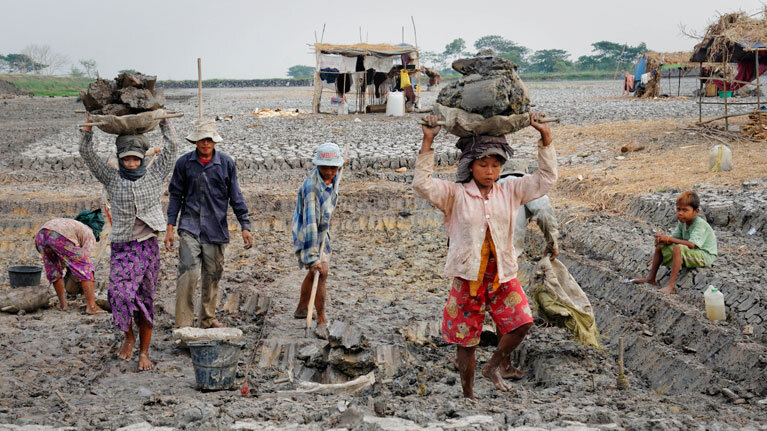Social justice for all. End child labor!

Observed on June 12th, World Day Against Child Labor is intended to serve as a catalyst for the growing worldwide movement against child labor. Emphasizing the link between social justice and child labor, the slogan for World Day in 2023 is ‘Social Justice for All. End Child Labor!’.
The abolition of child labor is a cornerstone of the aspiration for social justice, through which every worker can claim freely and on the basis of equality of opportunity and treatment their fair share of the wealth that they have helped to generate.
Yet what is happening with child labor is the very opposite of social justice.
According to the International Labor Organization, for the first time in 20 years, child labor is on the rise. Some 160 million children, almost one-in-10 worldwide, are in child labor.
What’s worse, half – 80 million – are in the most hazardous forms of child labor; that’s work with a real threat to their physical and mental health.
The United Nations Children's Fund (UNICEF) says the population of working children aged 5 to 17 has increased to 160 million people worldwide and increased by 8.4 million people in the last four years.
At the beginning of 2020, 63 million girls and 97 million boys in the world were child laborers. In other words, one out of every 10 children in the world is considered a child laborer, while in less developed countries, five out of every four children are child laborers. Until the age of 14, a child is engaged in work that is harmful to his growth, health, and education.
Since 2000, for nearly two decades, the world had been making steady progress in reducing child labor. But over the past few years, conflicts, crises, and the COVID-19 pandemic have plunged more families into poverty – and forced millions more children into child labor.
Economic growth has not been sufficient, nor inclusive enough, to relieve the pressure that too many families and communities feel and that makes them resort to child labor. Today, 160 million children are still engaged in child labor. That is almost one in ten children worldwide.
The situation in relation to child labor thus echoes the perceived lack of satisfactory responses to the multiple challenges and changes that affect the world of work. The growing gap between commitments and concrete achievements has fragilized action, resulting sometimes in disengagement. More than ever, it is urgent for all of us to contribute to bringing solutions to people’s daily problems, and to do so in a more efficient and coherent manner.
Child labor is – possibly – the most visible of these problems. It is caused by and perpetuates poverty and exclusion. It deprives children of education and opportunity and stacks the odds against their securing a decent income and stable employment as adults.
It is an injustice that is felt in most cases at the level of households and families—two-thirds of child labor occurs as a contributing family member. But it holds back the economic growth of entire countries and can be linked to rising inequality in many parts of the world. It is a threat to social cohesion and human progress.
Child labor in Iran
In Iran, the employment of children under the age of 15 is prohibited, and according to the Labor Law, a worker between the ages of 15 and 18 is called a "teenage worker" and must be medically tested by the Social Security Organization at the time of employment.
The latest forecasts show that there are about 120,000 child laborers in the country, who are generally victims of the cultural or economic poverty of their families, or the conditions caused by migration, displacement, or homelessness, and these factors cause them to work at a young age.
More than 80 percent of children living on the street are "non-Iranian". As per the Constitution of the Islamic Republic of Iran, religious teachings, and accepted international documents, Iran is committed to supporting people in need of help.
But there are also immigrants who enter the country illegally in search of work or to commit some crimes. Naturally, it is Iran's practice to support those in need of support, but people who do not need support and whose presence in the country is illegal should return to their own country.
One of the government's policies is to identify economic opportunities for refugees and foreign immigrants in the country. Therefore, the government is trying to identify the fields and job opportunities for the immigrants and to think of a plan so that these people can get to work quickly.
Our joint experience in tackling child labor over the course of the last three decades has demonstrated that child labor can be eliminated if the root causes are addressed. Measures to address these include the establishment and implementation of a strong legal framework based on International Labor Standards and social dialogue, the provision of universal access to education of good quality and to social protection, as well as direct measures to alleviate poverty, inequality, and economic insecurity, and promote decent work for adult workers.
Promoting concrete actions to address root causes and advancing social justice is at the heart of the Durban Call to Action, adopted at the 5th Global Conference for the Elimination of Child Labor in 2022.
It is a blueprint for turning the tide against child labor using every available economic, political, and social lever. It seeks to ensure that child labor is prioritized in national and global policymaking and activities, in development cooperation, and in financial, trade, and investment agreements.
We, therefore, consider the 2023 World Day Against Child Labor to be a moment for all of us who are committed to ending child labor to demonstrate that change can be achieved when will and determination come together, and provide momentum for efforts to be accelerated in a situation of great urgency.
Leave a Comment